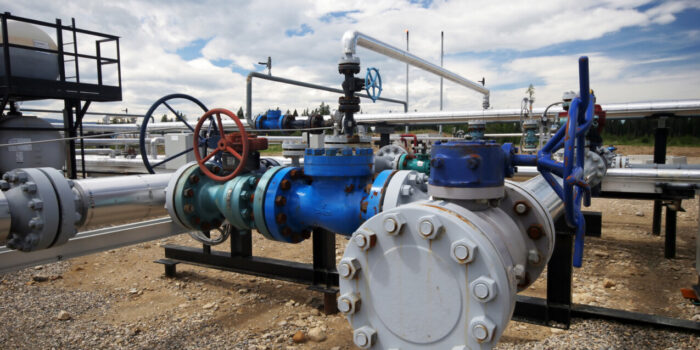Training in the assembly of flange connections
The installation of flanged joints may only be carried out by a person who is competent, skilled and authorised to do so. The permit is issued by the Technical Inspection Authority. This authorisation can be obtained by taking a flange fitting course and passing a knowledge and skills test. With this in mind, we have developed a training course on the installation and operation of flange connections.
Why choose our training?
Well made flange connections provide the possibility of long-term operation of tanks and pipelines and ensure their tightness and reliability. Our training company can boast many years of experience in providing professional training in the field of flange connections. We have obtained the UDT certificate allowing us to conduct training courses and examinations, as well as recognition as a training centre, which was issued by TÜV Akademia Polska. The course is designed for those who are involved in the installation of flange connections and those who inspect and supervise this work.

Course programme
During the course, you will gain theoretical knowledge covering the types of flange connections and information on how to install and dismantle them safely. You will also learn about the functions and types of gaskets. In practice, you will practise the skills of selecting the right gaskets and making and inspecting flange connections. The training is designed to give participants theoretical knowledge as well as practical skills on how to properly install and safely use pressure equipment. Particularly important in our classes is the safety, productivity and accuracy of the work. We provide professional support and consultation with specialists, as well as training materials. The course programme includes theoretical and practical classes.
| Type of classes | Description |
|---|---|
| Theoretical | The theoretical part covers such issues as: types of flange connections, types and functionality of gaskets and their relative features, types and causes of faults, types of bolt loads and gasket stresses, identification of faults and failures, types and construction of hydraulic wrenches, preparation of the sealing surface, rules of safe assembly and disassembly as well as occupational health and safety measures required when performing these activities. |
| Practical | During the practical classes, students will practically install flange connections. They will learn how to select personal protective equipment as well as control and select gaskets. They will learn what the sequence of actions related to the assembly and disassembly of connections is, and will also test their tightness. |
Final exam
At the end of the course, there is a theoretical and practical examination. Upon successful completion, trainees receive a TÜV certificate, which entitles them to perform flange joint assembly. Classes can be held at our premises or at a location suggested by the customer. Online training is also available. Please do not hesitate to contact us if you have any questions.
Characteristics of flanged connections

Flanged joints are distinguished by their ease of assembly, interchangeability of parts and the strength of the connections. For a flange connection to be leak-proof, certain conditions must be met. The flanges to be joined should have similar connection dimensions, not exceeding the permissible tolerance. Another condition is the periodic tightening of the joints to maintain the tightness of the bolted connections. This is particularly important as they are constantly exposed to mechanical vibration or significant fluctuations in ambient temperature and humidity.
Construction of flange connections
Flanged joints consist of: a flange, a set of fasteners - bolt, nut, washer and gasket. Their main purpose is to connect parts of the pipeline or, if necessary, to attach additional equipment to the pipe. They are available in one-piece and loose-fitting versions. The one-piece ones withstand loads well, made together with reinforcement during stamping and casting. Loose flanges are external disks attached to the flange or to the edge of the pipe. These types are not difficult to install, but are less strong.
What are the types of flange connections?
Depending on how the flange connections are fixed, we can distinguish between several types:
Welded flanges
They are used on steel pipelines and to connect devices. These are flat rings welded to the edge of the shell around its entire circumference. They can also be equipped with a locking ring.
Loose flanges on the weld ring
They consist of two parts - the flange itself and a ring that is welded to the pipe. This design is convenient to install. They are mainly used with metals such as copper and aluminum.
Clamp flanges
The joints are mounted close together and are used for enamelled metal structures. They help to maintain the correct temperature during enamel firing.
Threaded flanges
It is used on assemblies and devices where the use of welding is undesirable, as well as in places requiring easy disassembly. They withstand high pressure.



